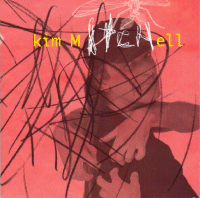
Itch
Itch (Latin: pruritus) is a sensation that causes the desire or reflex to scratch. Itch has resisted many attempts to classify it as any one type of sensory experience. Modern science has shown that itch has many similarities to pain, and while both are unpleasant sensory experiences, their behavioral response patterns are different. Pain creates a withdrawal reflex, whereas itch leads to a scratch reflex.
Unmyelinated nerve fibers for itch and pain both originate in the skin; however, information for them is conveyed centrally in two distinct systems that both use the same nerve bundle and spinothalamic tract.
Signs and symptoms
Pain and itch have very different behavioral response patterns. Pain evokes a withdrawal reflex, which leads to retraction and therefore a reaction trying to protect an endangered part of the body. Itch in contrast creates a scratch reflex, which draws one to the affected skin site. Itch generates stimulus of a foreign object underneath or upon the skin and also the urge to remove it. For example, responding to a local itch sensation is an effective way to remove insects from one's skin.
Itch (disambiguation)
An itch is an unpleasant sensation that evokes the desire or reflex to scratch
Itch or Itching may also refer to:
See also

Itch (Kim Mitchell album)
Itch is the sixth album from Canadian singer and guitarist Kim Mitchell. The album was released in 1994. This would be the last album to date that Mitchell would collaborate with lyricist Pye Dubois. Dubois didn't contribute any lyrics to Mitchell's previous album Aural Fixations released two years before this album.
Track listing
Personnel

Hand
A hand (Latin manus) is a prehensile, multi-fingered organ located at the end of the forearm or forelimb of primates such as humans, chimpanzees, monkeys, and lemurs. A few other vertebrates such as the koala (which has two opposable thumbs on each "hand" and fingerprints remarkably similar to human fingerprints) are often described as having "hands" instead of paws on their front limbs. The raccoon is usually described as having "hands" though opposable thumbs are lacking.
Fingers contain some of the densest areas of nerve endings on the body, are the richest source of tactile feedback, and have the greatest positioning capability of the body; thus the sense of touch is intimately associated with hands. Like other paired organs (eyes, feet, legs) each hand is dominantly controlled by the opposing brain hemisphere, so that handedness—the preferred hand choice for single-handed activities such as writing with a pencil, reflects individual brain functioning.
Some evolutionary anatomists use the term hand to refer to the appendage of digits on the forelimb more generally — for example, in the context of whether the three digits of the bird hand involved the same homologous loss of two digits as in the dinosaur hand.

Calligraphy
Calligraphy is a visual art related to writing. It is the design and execution of lettering with a broad tip instrument, dip pen, or brush, among other writing instruments. A contemporary calligraphic practice can be defined as, "the art of giving form to signs in an expressive, harmonious, and skillful manner".
Modern calligraphy ranges from functional inscriptions and designs to fine-art pieces where the letters may or may not be readable. Classical calligraphy differs from typography and non-classical hand-lettering, though a calligrapher may practice both.
Calligraphy continues to flourish in the forms of wedding and event invitations, font design and typography, original hand-lettered logo design, religious art, announcements, graphic design and commissioned calligraphic art, cut stone inscriptions, and memorial documents. It is also used for props and moving images for film and television, testimonials, birth and death certificates, maps, and other written works.
Tools
The principal tools for a calligrapher are the pen and the brush. Calligraphy pens write with nibs that may be flat, round, or pointed. For some decorative purposes, multi-nibbed pens—steel brushes—can be used. However, works have also been created with felt-tip and ballpoint pens, although these works do not employ angled lines.

System of a Down (album)
System of a Down is the debut album by Armenian American rock band System of a Down, released in 1998. The album was certified gold by the RIAA on February 2, 2000. Two years later, after the success of Toxicity, it was certified platinum.
Overview
The cover artwork is from an anti-fascist, World War II-era poster designed by the artist John Heartfield for the Communist Party of Germany, which was contemporary with and directly against the Third Reich. The text on the original poster is: "5 fingers has a hand! With these 5 grab the enemy!" This slogan inspired part of the text contained on the back of the System of a Down album: "The hand has five fingers, capable and powerful, with the ability to destroy as well as create". Later, it is written in bold letters: "Open your eyes, open your mouths, close your hands and make a fist" (used later by Serj Tankian in the song "Uneducated Democracy").
Reception
Q magazine (10/01, p. 152) - 4 stars out of 5 - "This remains an excellent starting point for this most curious band".
Podcasts:

